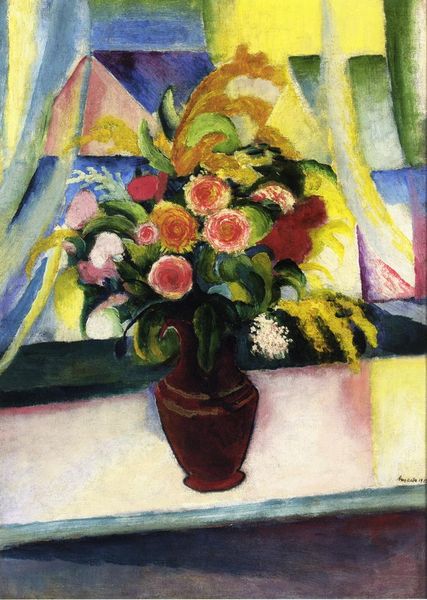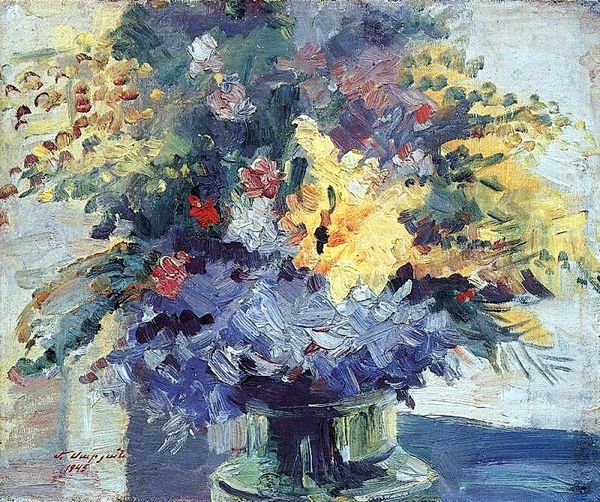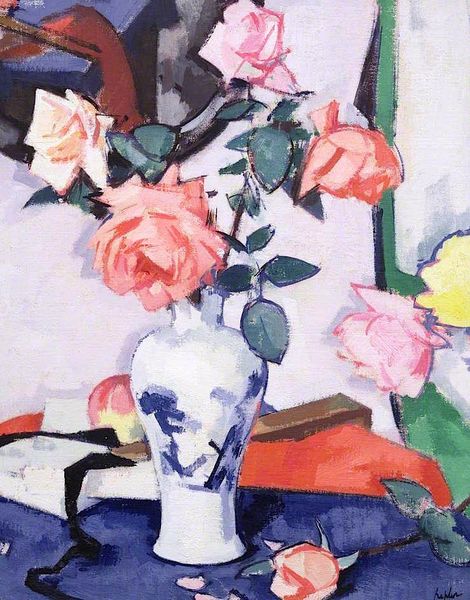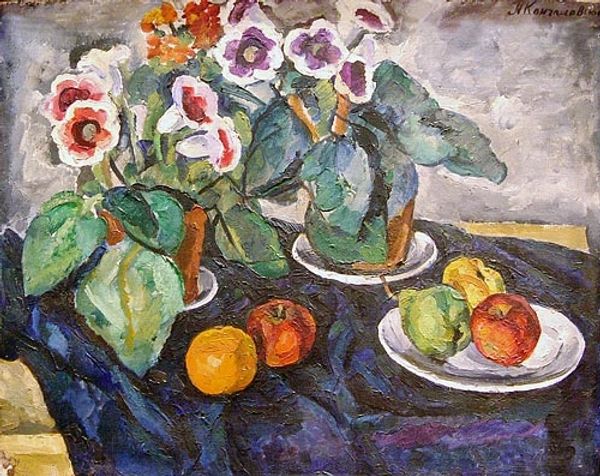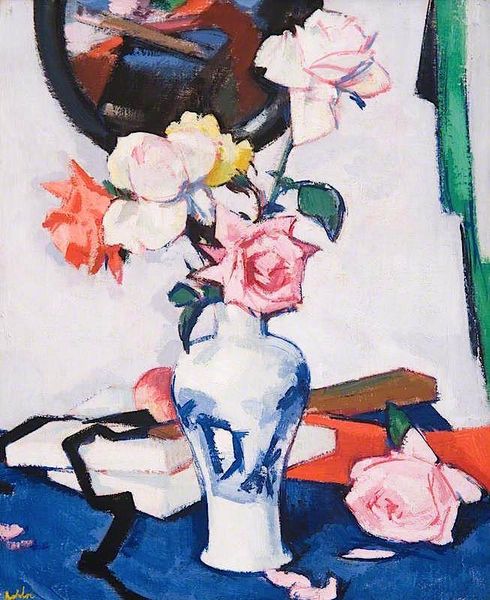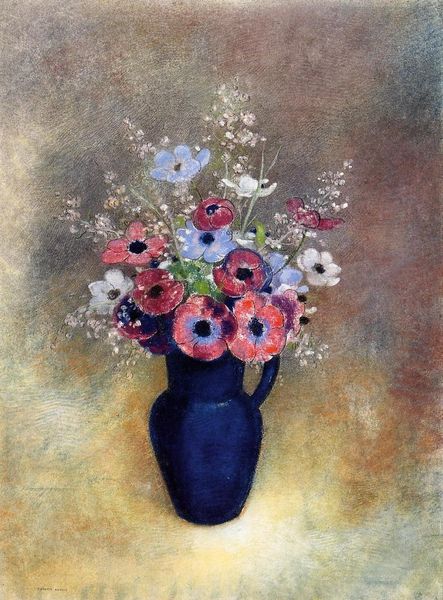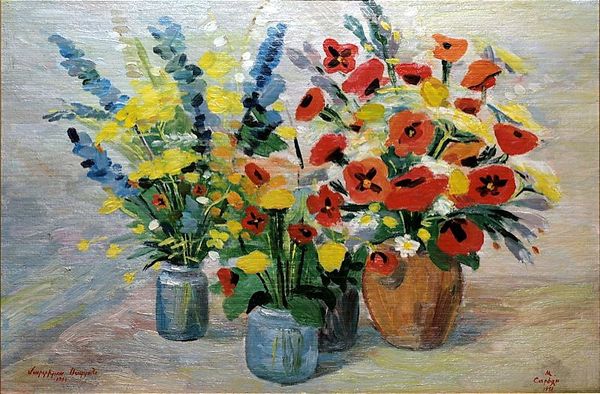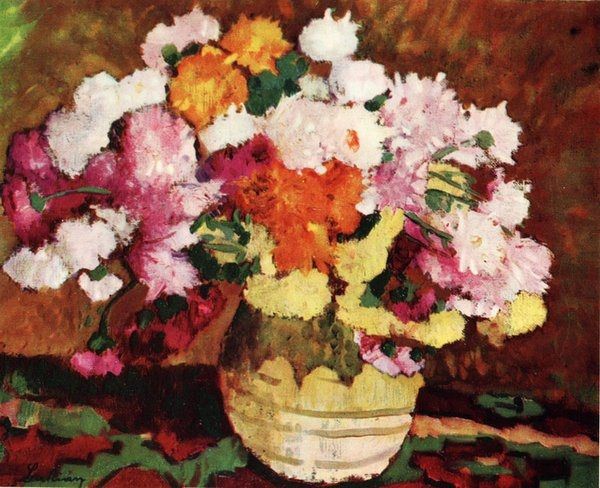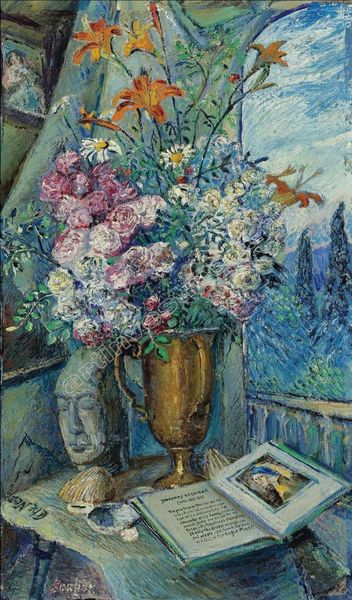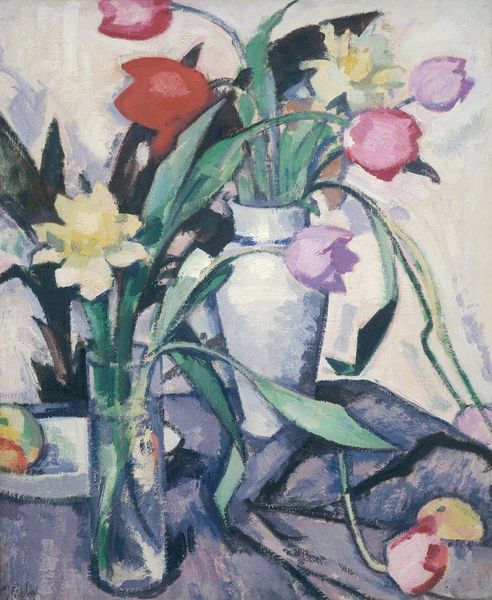
photography
#
still-life
#
abstract painting
#
flower
#
impressionist landscape
#
possibly oil pastel
#
photography
#
handmade artwork painting
#
oil painting
#
fluid art
#
acrylic on canvas
#
plant
#
naive art
#
chaotic composition
#
expressionist
Dimensions: 98 x 109 cm
Copyright: Public domain US
Editor: Here we have Pyotr Konchalovsky's "Still Life. Flowers in pink." from 1918, presented in oil paint, presumably on canvas. The energy feels almost frenetic, doesn't it? There's such a vibrancy in the brushstrokes and color choices, like it's capturing a fleeting moment of wild beauty. How do you interpret the symbolic language at play? Curator: I see the flower arrangement not merely as a depiction of nature but as a symbol of resilience, rebirth and optimism. Look at the variety – lilies, daisies, and other blooms all jostling together in one vase. Doesn't that chaotic composition itself tell a story? Editor: I see that, but could that be considered hopeful, given the context of 1918? After all, it was still wartime… Curator: Precisely. While bearing some resemblance to Expressionism, Konchalovsky also imbues the image with distinctly Russian symbolic tropes of nature's ability to both reflect and transcend social instability and sorrow. Are the flowers wilting, or standing firm? The vase, seemingly woven with an imperfect latticework, mirrors both fragility and structured support, speaking to both cultural memory and the psychological needs of the moment. Editor: So you see the choice of pink as an important signal. Curator: Pink can simultaneously represent fragility and strength, youth and remembrance. In this work, I think that Konchalovsky uses it as a way to portray this in-between state of trying to look forward after immense hardship and to recall traditions. Do you agree? Editor: Yes, seeing how the pink interplays with those bolder blues and oranges makes the work so much richer now. I had initially overlooked that dynamic. Curator: It is in the dance between overt appearance and deeper symbol that much of this image’s poignancy arises. Editor: It gives a fresh, compelling context to how still lifes carry cultural weight, moving beyond just pretty imagery!
Comments
No comments
Be the first to comment and join the conversation on the ultimate creative platform.
